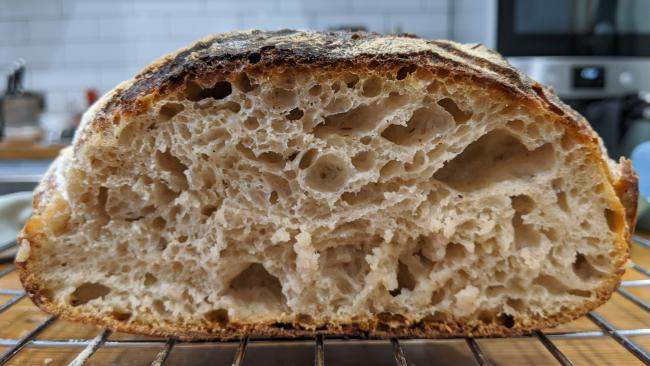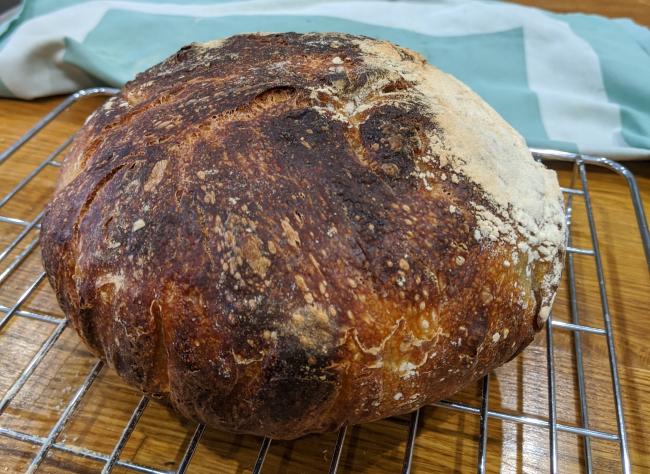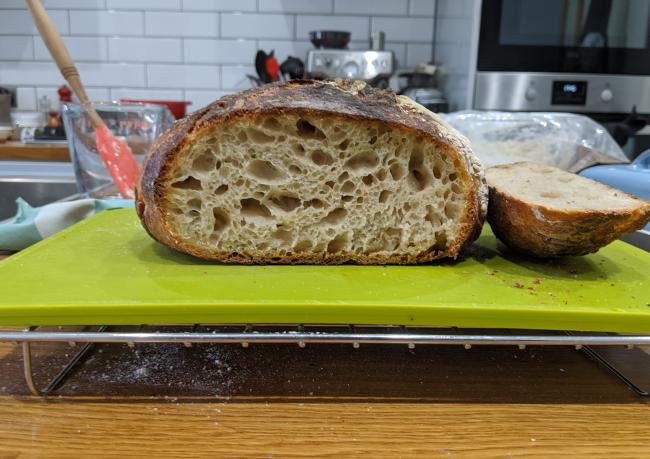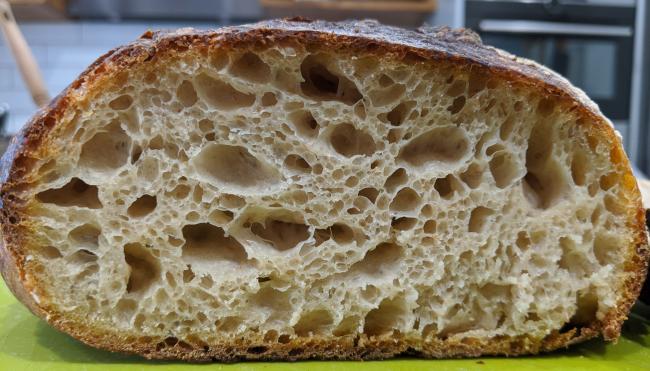
After the success of my room-temperature-overnight-proof sandwich loaf, I was keen to try this same method with my regular loaf.
To be honest, I'm still too much of a novice to really know if a proof is complete and the dough ready to go to the next stage. Even the 'poke test' seems to have a wide range and window of interpretation.
For my bulk rise, I've always placed the dough in the fridge overnight and then just picked up in the morning and gone from there. I'll do it differently this time.
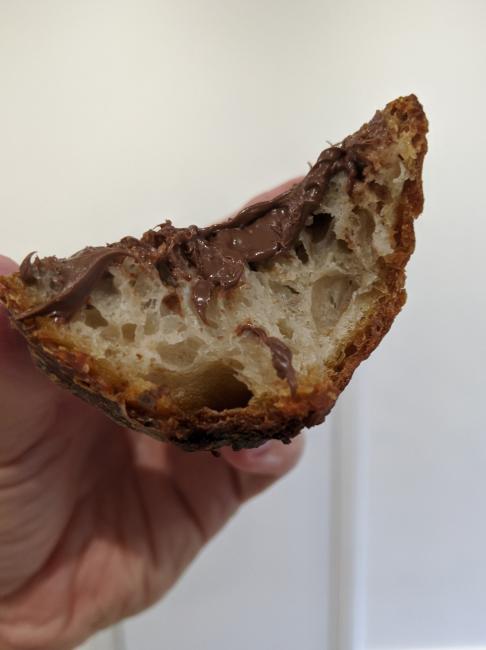
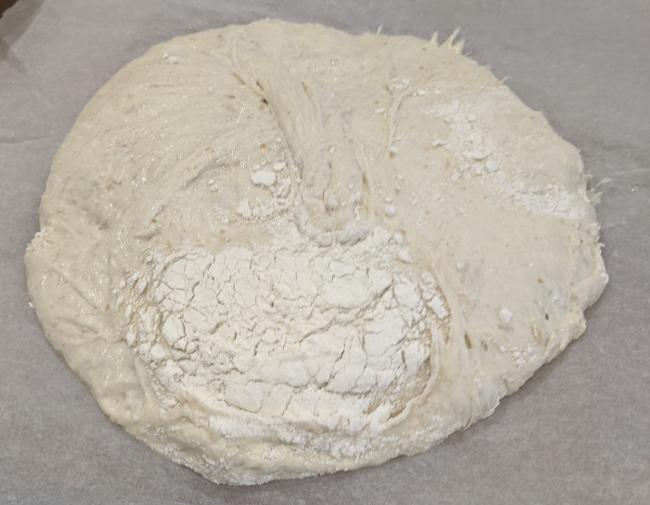
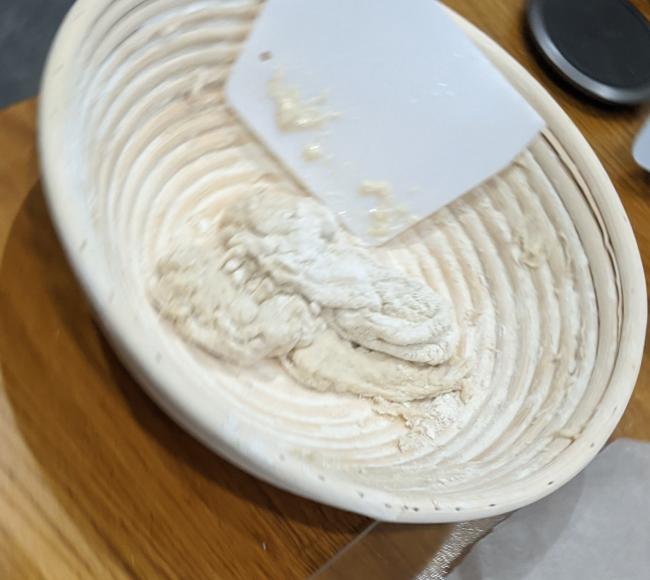
As I'm still learning, I'm keeping to the same method for my bakes, and just making slight alterations here and there. That way, the variations are something I'm more likely to control and that I'm able to replicate if they are a success.
For this bake, following my set of four stretch-and-folds, I then left the dough to rest overnight in a plastic bag. I finished my last stretch and fold at 8.30pm and then came back to it at 8.30am the following morning - a full 12 hours later.
In that time, the dough had overgrown the sides of the bowl. It had grown so much I worried that it may have been overproofed. It was light and airy and actually quite nice to lift and manage to pre-shape for the 30-minute bench rest. Then, I shaped it and placed into my floured banneton.
Usually, I would then check on this after 1.5-2 hours and the poke-test would normally tell me it was ready for baking and I'd then have it in the oven after about 2.5 hours. This time, however, I had quite a busy morning of back-to-back meetings so wasn't able to check on it as regularly. In the end, I only came back to it at 1pm - a full four hours later. The poke test was still good and the dough had, for the first time, filled almost the whole of the basket.
Then, disaster: the dough got stuck. As I tried to invert it onto the baking paper, it just wouldn't all come out. This definitely meant I wouldn't get that beautiful artisan look, but no reason to think the dough wouldn't be any good. In fact, I was quite looking forward to seeing the difference a much longer proof would make.
I increased the cooking time by ten minutes - five more for the initial rise and five more for the bake with the lid off. The last loaf was slightly underbaked and I also thought the crust could do with a bit longer.
I'll be honest, the loaf didn't look that great when I took it out of the oven. It was probably a bit too dark on the top and any artisan shape was definitely gone. It certainly wasn't going to win any awards for the way it looked. The bottom of the loaf was also slightly darker than usual. Perhaps an increase of 10 minutes was just a bit too much?
But the inside. That was a different story. The distribution of the bubbles and the evenness of the crumb was the best I've done and it's made me think that perhaps all of my previous loaves were under-proofed. The crust had a gorgeous crispness and crunch to it and the flavour was just amazingly satisfying.
They always say you shouldn't judge a book by its cover - and trust me, this is better than it looks! Perfect with a generous spread of Nutella!
